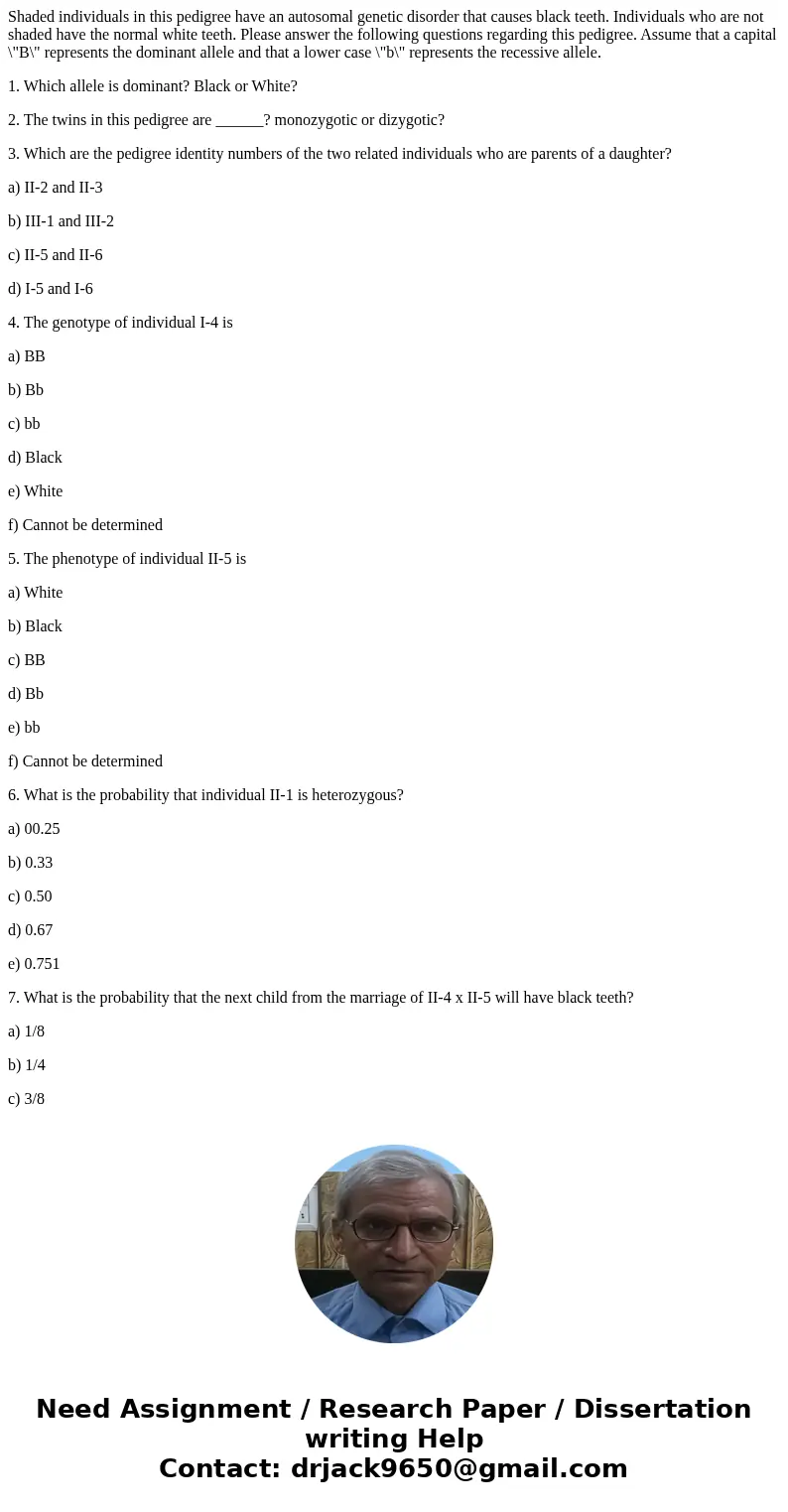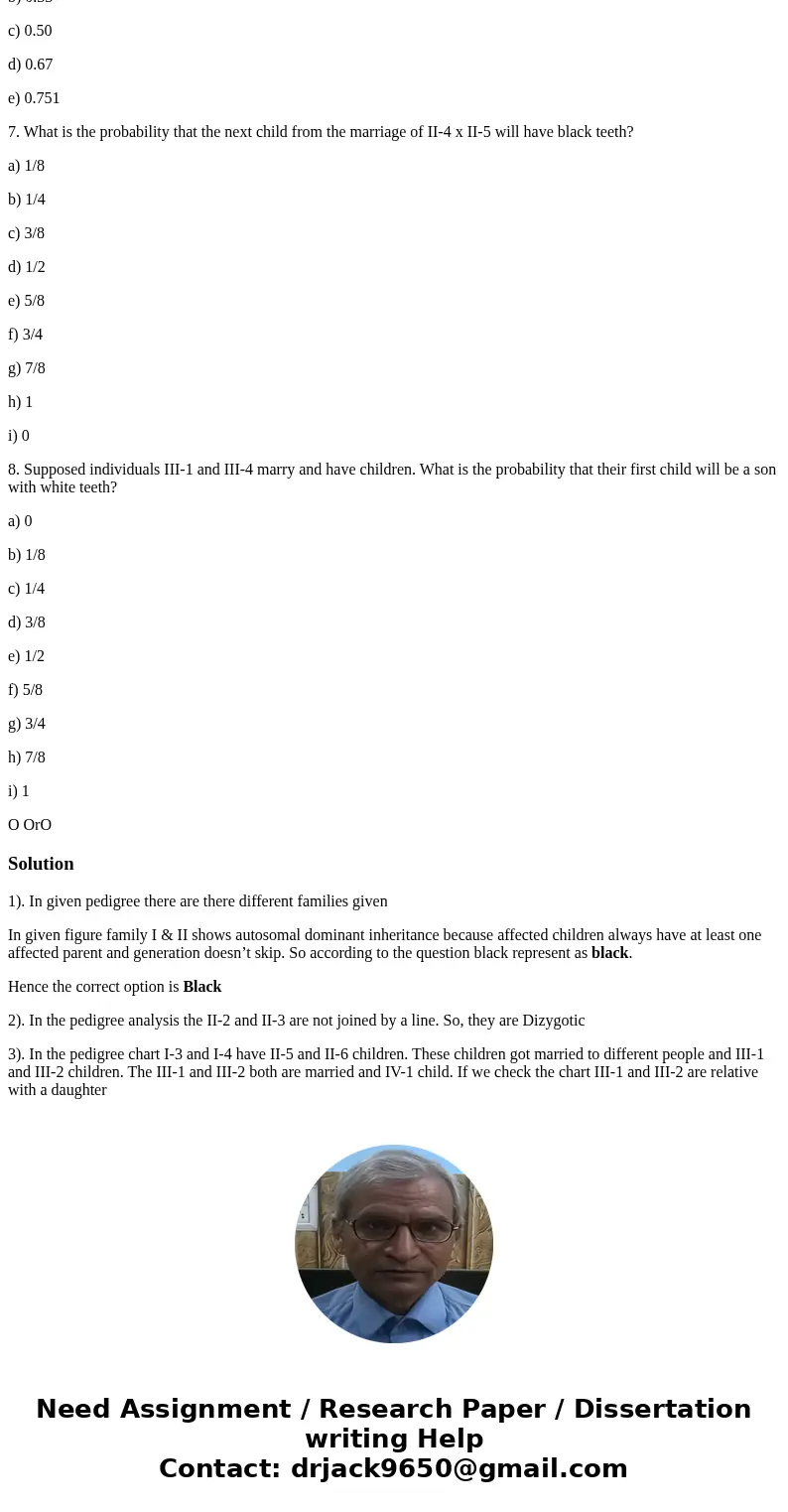Shaded individuals in this pedigree have an autosomal geneti
Shaded individuals in this pedigree have an autosomal genetic disorder that causes black teeth. Individuals who are not shaded have the normal white teeth. Please answer the following questions regarding this pedigree. Assume that a capital \"B\" represents the dominant allele and that a lower case \"b\" represents the recessive allele.
1. Which allele is dominant? Black or White?
2. The twins in this pedigree are ______? monozygotic or dizygotic?
3. Which are the pedigree identity numbers of the two related individuals who are parents of a daughter?
a) II-2 and II-3
b) III-1 and III-2
c) II-5 and II-6
d) I-5 and I-6
4. The genotype of individual I-4 is
a) BB
b) Bb
c) bb
d) Black
e) White
f) Cannot be determined
5. The phenotype of individual II-5 is
a) White
b) Black
c) BB
d) Bb
e) bb
f) Cannot be determined
6. What is the probability that individual II-1 is heterozygous?
a) 00.25
b) 0.33
c) 0.50
d) 0.67
e) 0.751
7. What is the probability that the next child from the marriage of II-4 x II-5 will have black teeth?
a) 1/8
b) 1/4
c) 3/8
d) 1/2
e) 5/8
f) 3/4
g) 7/8
h) 1
i) 0
8. Supposed individuals III-1 and III-4 marry and have children. What is the probability that their first child will be a son with white teeth?
a) 0
b) 1/8
c) 1/4
d) 3/8
e) 1/2
f) 5/8
g) 3/4
h) 7/8
i) 1
O OrOSolution
1). In given pedigree there are there different families given
In given figure family I & II shows autosomal dominant inheritance because affected children always have at least one affected parent and generation doesn’t skip. So according to the question black represent as black.
Hence the correct option is Black
2). In the pedigree analysis the II-2 and II-3 are not joined by a line. So, they are Dizygotic
3). In the pedigree chart I-3 and I-4 have II-5 and II-6 children. These children got married to different people and III-1 and III-2 children. The III-1 and III-2 both are married and IV-1 child. If we check the chart III-1 and III-2 are relative with a daughter


 Homework Sourse
Homework Sourse